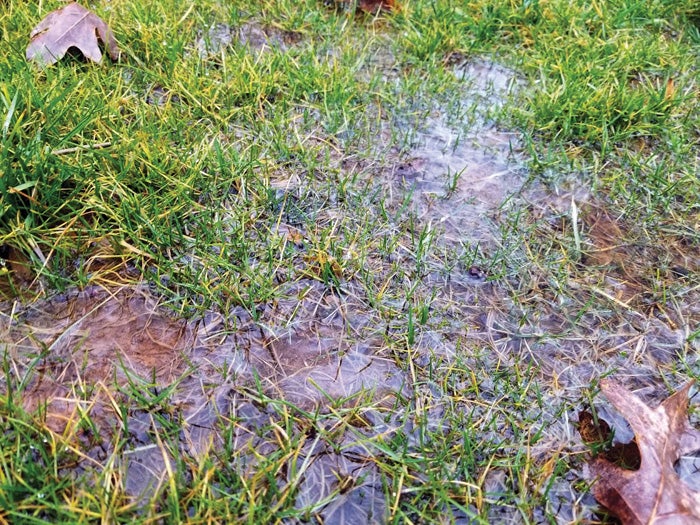Darrell Blackwelder column: Water-logged fescue
Published 12:00 am Sunday, February 28, 2021

- Water-logged lawns from recent abundance of rainfall.
The overabundance of rainfall this fall and winter have made our cool-season fescue lawns look pretty bad, especially those that were reseeded. Areas that were over-seeded in the fall are now non-existent from constant rainfall and standing water. In a normal season, fescue seed can survive during the winter months and germinate in early spring, but with standing water issues, lack of oxygen and decay has become eliminated our chances for germination
In 2020, the Piedmont region received more than 70 inches of rainfall, almost double our normal rate. Most of that was in the late summer and fall. Lawns look about as bad or even worse than they did before fall over seeding. Cold temperatures have also put a damper on the newly seeded lawns. Many have turned orange-yellow from the extreme dip with cold weather experienced earlier last week. Fortunately, when warm weather arrives, the yellow foliage will disappear.
Many are asking what can be done to help their pitiful lawns? Adding more seed this spring in March and April may help. But, this only a quick fix as hot summer temperatures generally eliminate spring seeded fescue lawns. Also be aware that over-seeding cannot be done in areas where pre-emergence herbicides have been applied.
Spring fertilization will also be of benefit. Generally, the majority of cool-season fescue fertilization is done in the fall and lightly applied in the spring. But with all the water leaching away the nutrients, more spring fertilization may help, especially with existing turf. More detailed information can be found at https://www.turffiles.ncsu.edu/2021/02/waterlogging-influence-on-turfgrasses/
Darrell Blackwelder is the retired horticulture agent and director with the North Carolina Cooperative Extension Service in Rowan County. Contact him at deblackw@ncsu.edu .



